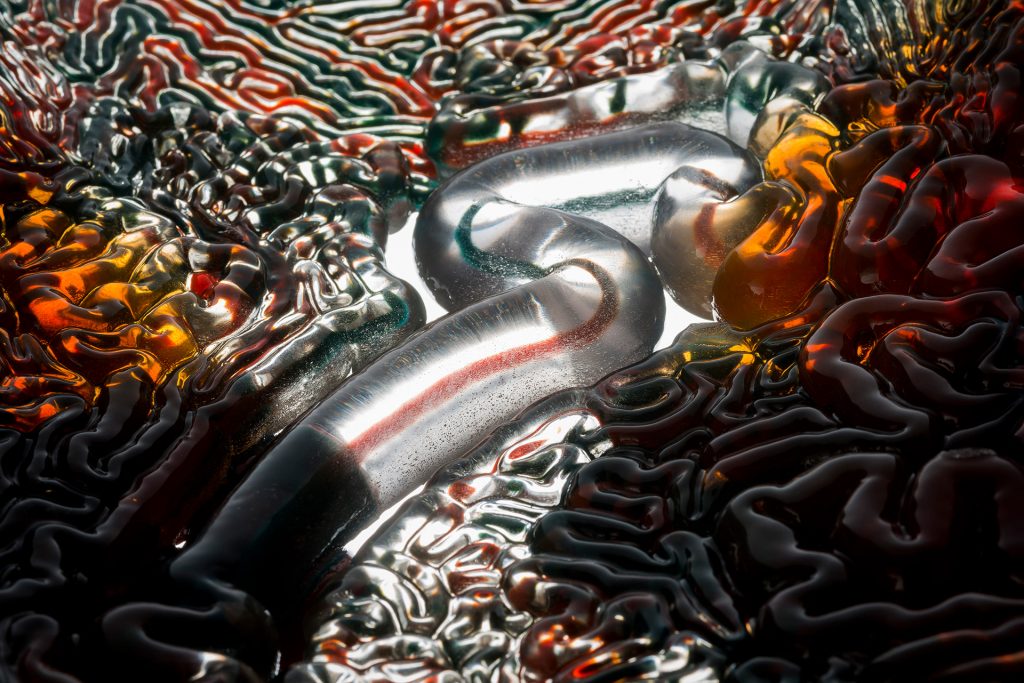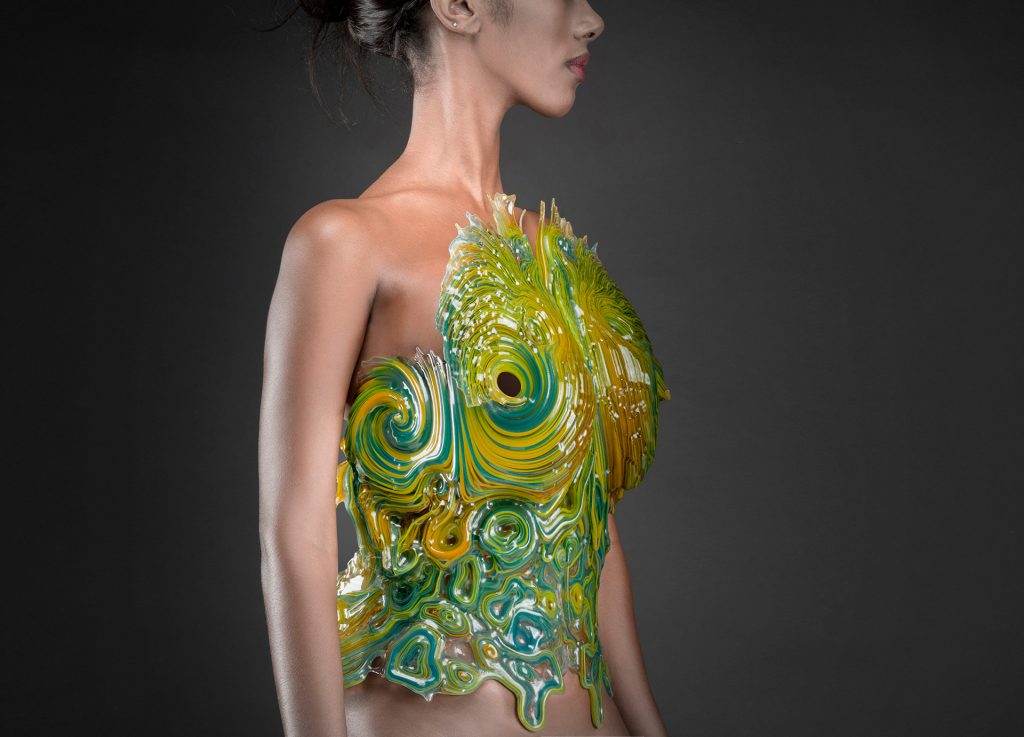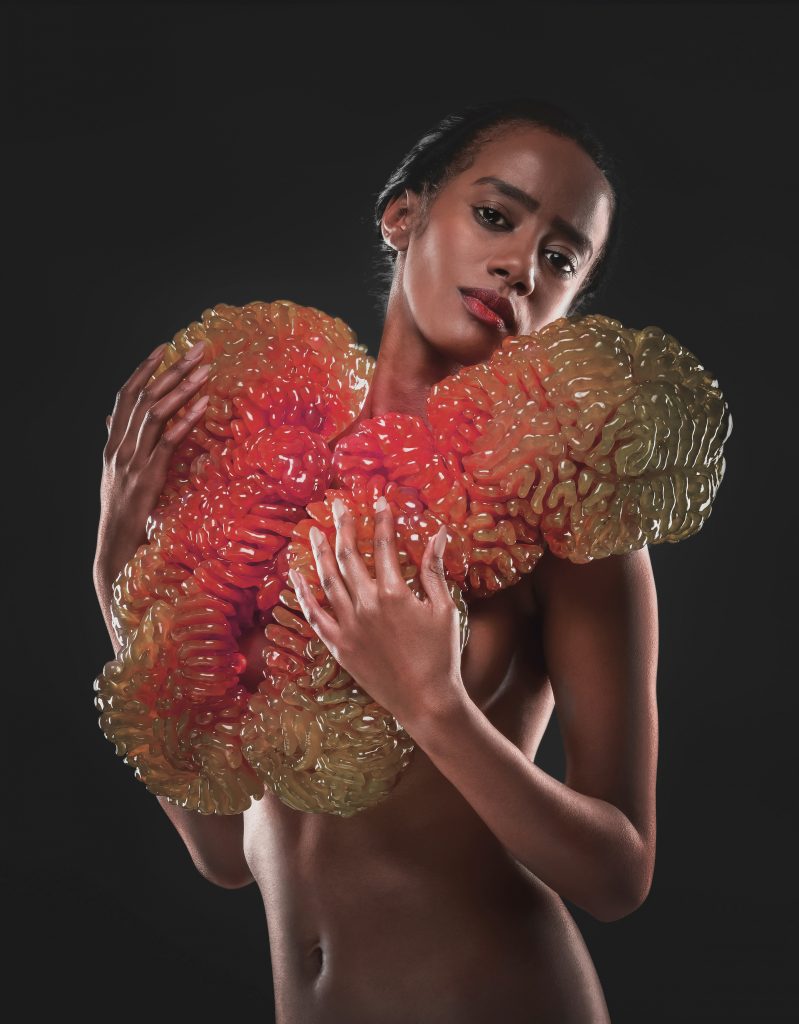
Wanderers computationally grows wearables through a process that emulates natural growth behavior. The shapes start out as a “seed” and adapt to their environment as they grow.

The process imitated biological growth by transforming a geometric input into an intermediate representation, then deforming the initial geometric representation. The deformed initial representation reacts to the deformation of the object. This process is done iteratively, so as it repeats, the deformations aggregate into visible growth of the object.

I admire this project because it take biomimicry to the next level; rather than emulating specific end product qualities found in nature, this project literally grows and adapts the same ways living organisms do. Most man-made creations lack this quality. This opens up a whole host of new possibilities in design because as humans, many aspects of the future will always be uncertain, so fixed design will always have a flaw. But if you create algorithms that are capable of adapting to future changes, then design will be much for capable and efficient. Many of the things we design (buildings, energy systems, etc) are meant to exist for long periods of time and will need to be able to adapt to uncertain changes (eg effects of climate change).

![[OLD SEMESTER] 15-104 • Introduction to Computing for Creative Practice](wp-content/uploads/2023/09/stop-banner.png)